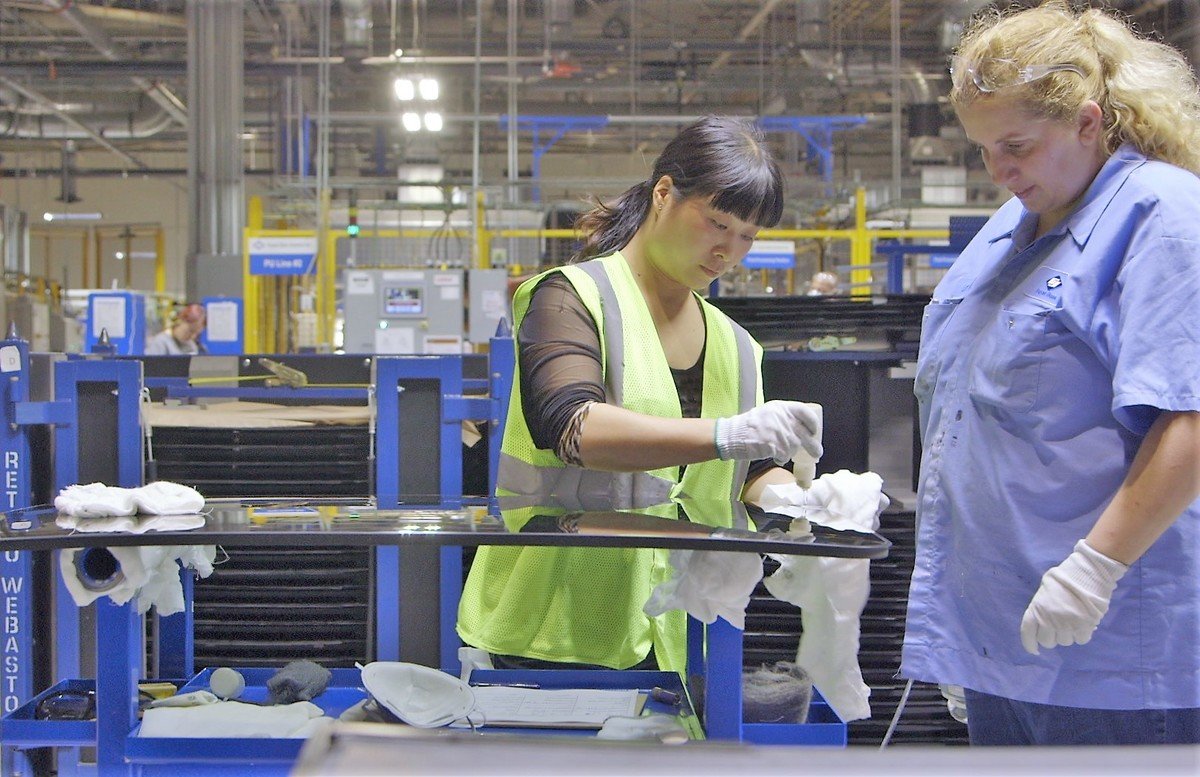

This year’s Academy Award winner for best documentary feature, American Factory (now on Netflix), chronicles the ups and down of a Chinese industrial facility recently opened in the midwestern city of Dayton, Ohio. Offering a fascinating glimpse into what might hearken a new age in global manufacturing, the film conveys a combined sense of hope and unease as two very different cultures cooperate and collide.
When in 2008 U.S. automobile behemoth General Motors shut down the operations of its Dayton plant, it not only left behind the shell of another enormous industrial facility increasingly to be seen across the country’s so-called Rust Belt. It also left behind thousands of unemployed local workers teetering over the brink into poverty. So when in 2014 Chinese billionaire “Chairman” Cao Dewang negotiated to take on the site for the flagship branch of Fuyao Glass America, there was an overall atmosphere of gratitude and hope.
Cultural differences emerge early in the process, the documentary relates, as hundreds of Chinese workers immigrate to the midsized American city to train and supervise local workers. Most of the newcomers, it would seem, do not speak English, and so translators are required and little kerfuffles of misunderstanding ensue.
Larger differences of cultural expectation also come to the fore. In a personnel meeting conducted in Mandarin, for instance, Chinese employees receive instruction about the general overconfidence of their American counterparts, who, they are told, have received too much encouragement since childhood. They are equipped with the practical maxim “Donkeys like to be petted in the direction their hair grows.”
From the perspective of many Americans, Chinese demands are unrealistic. From the perspective of many Chinese, American workers are too fat-fingered, chatty, and undisciplined. In Fuyao’s Chinese branch, we learn, employees work 12-hour shifts, seldom see their families, and take only one or two days off per month.
Whereas GM workers at the same site once earned close to $30 an hour, Fuyao’s employees make only $14. Fuyao Glass America loses $40 million in its first year of operations.
In the stormy days that follow, the Chinese supervisors attempt to increase efficiency by pushing the Americans to the limit. As disquiet and workplace injuries mount up, a contingent of Americans pushes back and attempts to unionize, an outcome which the Chairman has already indicated will not be tolerated.
For the ending of the drama, you’ll have to watch for yourself.
There are many layers of interest in the film, foremost, perhaps, its complexity and unswerving honesty. Conflicting points of view are represented side by side without an attempt to compress them into a cookie-cutter resolution.
Fuyao’s employees labour under conditions more difficult than those once had by GM’s. Yet GM had to close its doors, and Fuyao opened them again.
I grew up less than an hour from Dayton and can well imagine the mixed reception this kind of Sino-American collaboration might receive – gratitude, perplexity, and hope, alongside coming to terms with a hard, new reality. For anyone interested in the changing face of global trade relations – or, indeed, the opportunities and challenges created between the human faces, languages, and cultures involved – American Factory offers a timely and intriguing study.
(Originally published in The B.C. Catholic)
